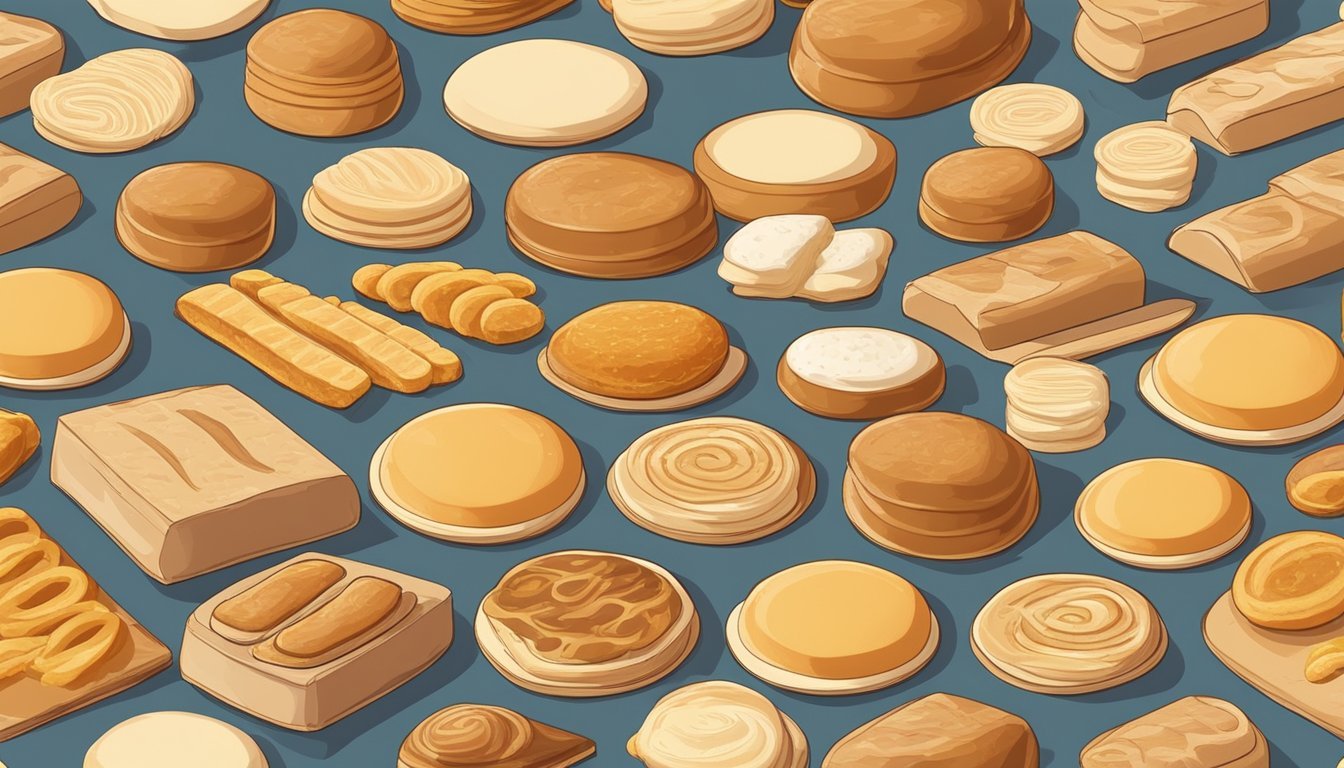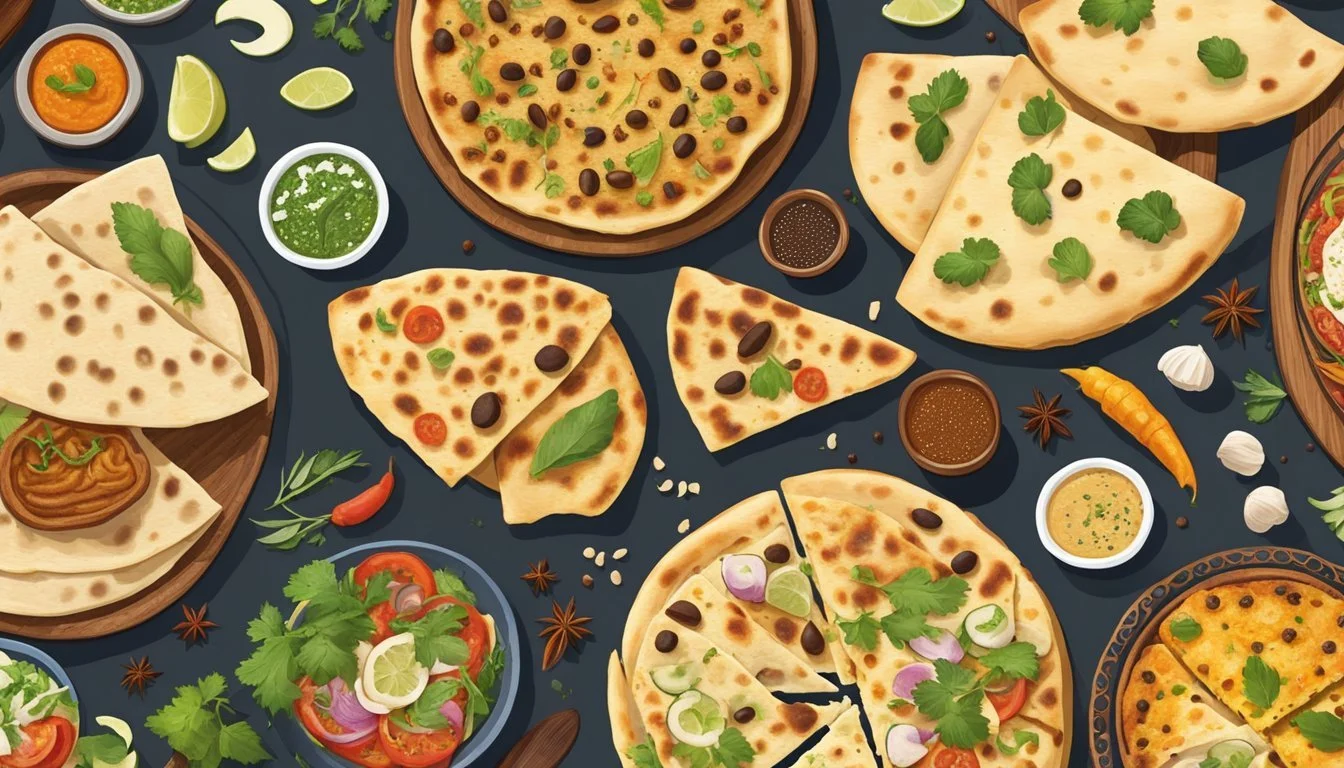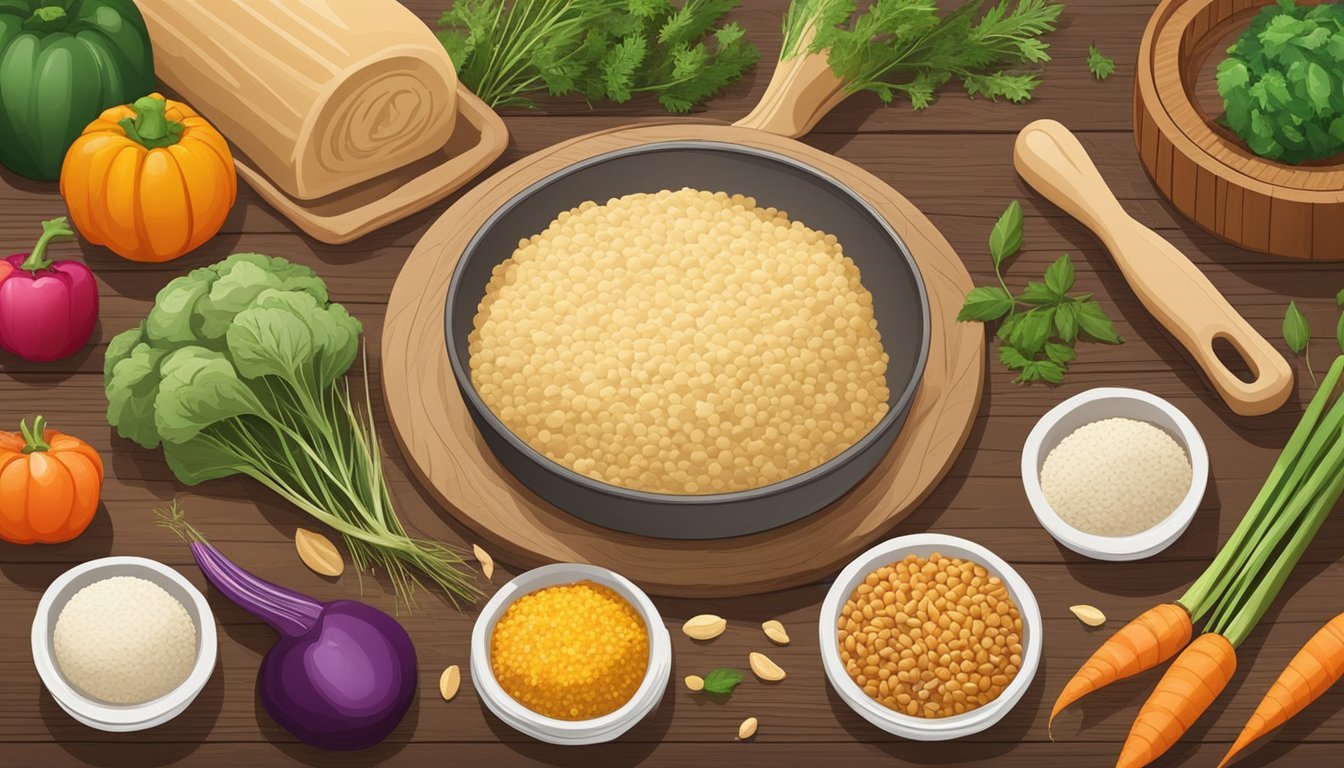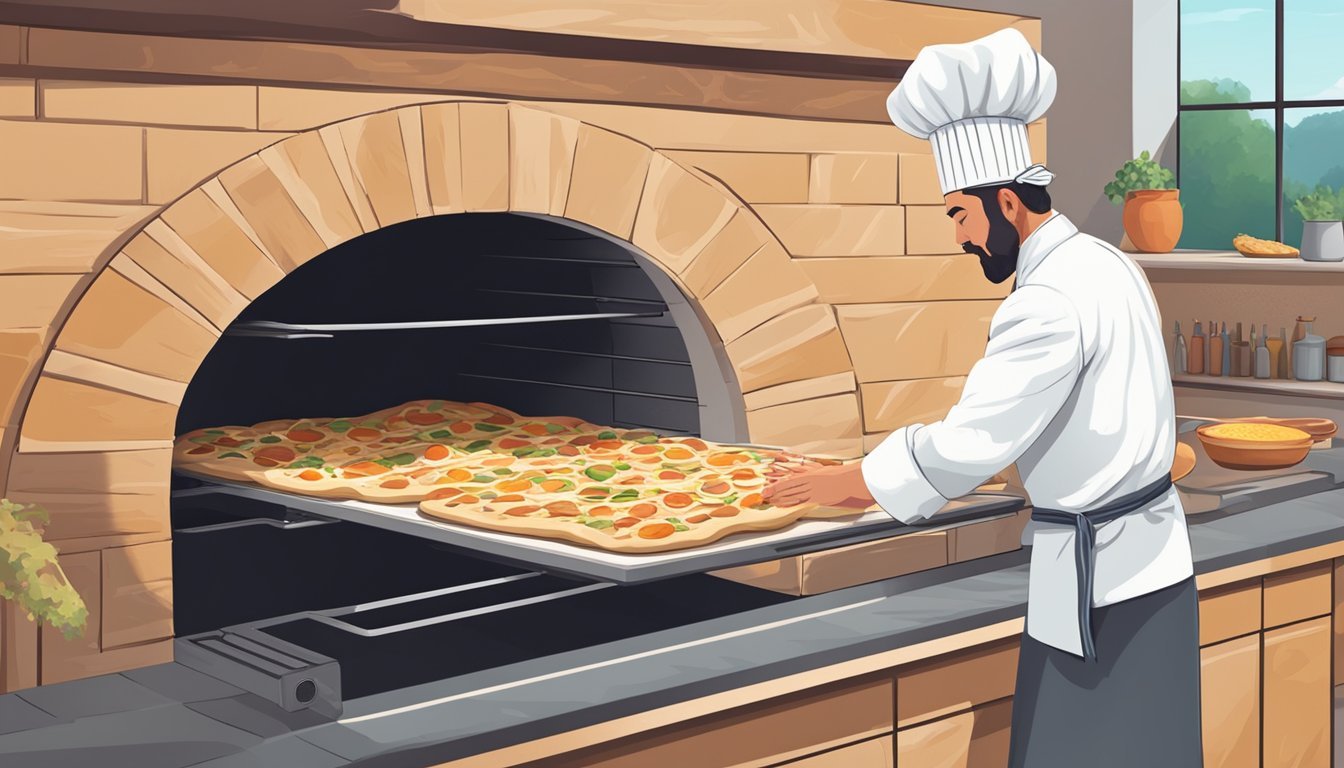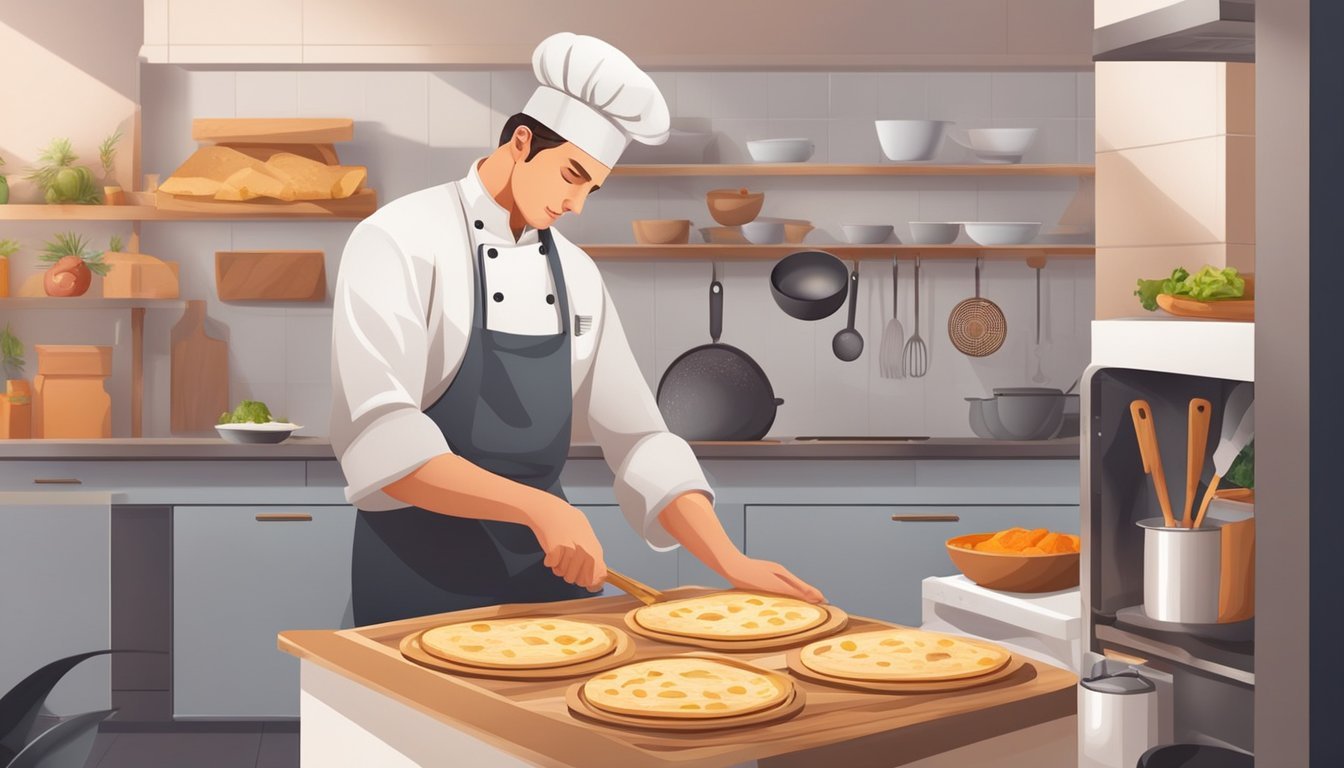Crafting Artisan Flatbreads Without a Tandoor
Your Guide to Homemade Delights
Artisan flatbreads evoke the warmth and tradition of centuries-old baking techniques, offering a sensory experience characterized by their rustic appeal and delicious taste. However, the traditional method of baking flatbreads, such as naan, typically involves using a tandoor, a cylindrical clay oven that can reach extremely high temperatures to create that distinctive char and fluffy texture. For those without access to this specialized equipment, the prospect of making authentic flatbread at home might seem daunting, but it is entirely possible with a few adjustments and a creative approach.
Making artisanal flatbread without a tandoor opens up a world of culinary exploration right in the home kitchen. The key lies in understanding the principles that make tandoor-baked breads so unique and then adapting those conditions using standard kitchen appliances like skillets or griddles. A high heat source, for instance, is essential in replicating the quick cooking process that gives naan its signature bubbles and slight smokiness.
Home chefs can harness their ovens, stovetops, or even outdoor grills to mimic the effects of a tandoor. Techniques involve preheating pans to create a hot surface similar to the walls of a tandoor and utilizing broilers to evoke the intense, direct heat from above. The right combination of ingredients, including high-quality flour and yogurt, along with proper dough handling, can yield artisanal flatbreads that are both visually appealing and rich in flavor. Even without the traditional clay oven, the art of making flatbread remains an accessible and rewarding endeavor.
The Basics of Artisan Flatbread Making
Crafting artisan flatbreads requires careful selection of ingredients, an understanding of leavening agents, and mastery of kneading techniques to create the desired texture.
Ingredients Selection
The foundation of any artisan flatbread is the flour. All-purpose flour is commonly used for its versatility, but one can also opt for whole wheat for a denser texture and richer flavor. The incorporation of fine sea salt ensures enhanced taste, and olive oil is often included to provide a tender crumb and crisp edge.
Flour: Whole wheat or all-purpose
Salt: Fine sea salt
Olive Oil: Extra virgin for flavor
Understanding Leavening Agents
Leavening agents play a pivotal role in the texture of flatbreads. Yeast is a popular choice, creating airiness through fermentation. For those seeking a quick rise, baking powder offers a viable alternative. The key is to balance the water and leavening agent to achieve the right level of rise without compromising flavor.
Yeast: Active dry or instant for leavening
Water: Warm to activate yeast
Kneading Techniques for Texture
Proper kneading develops the gluten in the dough, which is critical to the flatbread's final texture. The goal is a soft and elastic dough, achieved by kneading for several minutes. Techniques vary; some bakers prefer a gentle, consistent pressure, while others employ a more forceful method.
Knead until dough is smooth and elastic
Adjust kneading intensity as deemed necessary
Flatbread Without Yeast
Crafting flatbreads without yeast is a simple process that produces delightful results. With alternatives like baking powder, no-knead methods, and sourdough starters, bakers can create delicious, artisan flatbreads with ease.
Using Baking Powder
Baking powder acts as a leavening agent in flatbreads, creating a rise without the use of yeast. It works by releasing carbon dioxide gas into the dough when moisture and heat are applied, which results in a soft and fluffy texture. An ideal proportion for this is to use about 1 to 1.5 teaspoons of baking powder for every cup of flour to achieve the desired lift in the flatbread.
Options for No-Knead Flatbreads
No-knead flatbreads offer convenience and simplicity, as they do not require extensive kneading like traditional yeasted doughs. The ingredients are mixed until combined, then allowed to rest. During this rest period, gluten strands naturally align, developing the dough's structure without physical kneading. This approach is perfect for bakers looking for a less labor-intensive process while still yielding a tender and chewy flatbread, akin to pita.
Sourdough as an Alternative
For those interested in a yeast-free option that still allows for a fermented flavor, sourdough starters are an excellent alternative. A sourdough starter is a mix of flour and water that has been allowed to ferment, attracting natural yeast and bacteria from the environment. This fermentation process imparts a tangy flavor and helps leaven the flatbread similarly to baking powder. It’s important to maintain a healthy starter culture, feeding it regularly with flour and water to achieve consistent results in sourdough flatbread baking.
From Dough to Bread: Shaping and Baking
Transforming dough into artisan flatbread encompasses mastering the shaping process and perfecting baking techniques. Achieving the desired texture, from chewy to crispy, depends on these critical steps.
Rolling Techniques
One begins the shaping process by flattening the dough into the desired thickness, influencing the final texture. A rolling pin provides control over the dough's uniformity, leading to an even rise and consistent results. The dough should be turned frequently to achieve a round shape, and dusting with flour prevents sticking. When aiming for a softer texture, pressing the dough by hand maintains the airiness that contributes to its pliability.
Determining Optimal Baking Conditions
The oven should be preheated to the right temperature to facilitate a proper rise and achieve that characteristic golden brown surface. Flatbreads typically bake at a high temperature, around 400-475°F (200-246°C), for a shorter period, ranging from 18 to 25 minutes. Using a baking stone or a dutch oven can mimic the heat distribution akin to a tandoor oven, essential for a crispy crust. Flatbreads are done when they emit a hollow sound upon tapping and possess a crisp exterior with a soft interior.
Oven Rack Position: Middle for even baking
Baking Temperature: 400-475°F (200-246°C)
Baking Time: 18-25 minutes
Alternative Cooking Methods
For those without a conventional oven, a griddle or a cast-iron skillet provide excellent alternatives for baking flatbreads. These methods offer direct and consistent heat, ensuring a crispy texture. One can also use a camping stove or microwave for situations with limited resources. The key is to adjust the heat source to prevent burning while allowing the bread to become thoroughly cooked. Regardless of the method, one should monitor the bread's progress for tell-tale signs of doneness such as a crispy edge and a soft, chewy center.
Crafting the Flavor of Flatbreads
The essence of flatbread lies not only in its simplicity but also in its flavor profile, which can be significantly enhanced through the careful selection of ingredients and use of various cooking techniques.
Herbs and Spices
Herbs and spices are pivotal in defining the flavor character of flatbreads. Incorporating basil, garlic, and a medley of other dried or fresh herbs results in a fragrant dough with complex tastes. Spices like cumin or coriander can also be used to infuse warm, earthy tones.
Essential Herbs and Spices:
Garlic: Adds a pungent, warm kick
Basil: Offers a sweet, peppery layer
Others: Cumin, coriander, thyme
Using Fats for Flavor Enhancement
Fats play a dual role in flatbread making; they contribute to a soft texture and introduce rich layers of flavor. Olive oil is commonly used for its fruity notes, while buttery undertones can be achieved with, well, butter. Both also help create a tender crumb.
Fats for Enhanced Flavor:
Olive Oil: Fruity, savory notes
Butter: Rich, creamy flavor
Incorporating Vegetables and Cheeses
Vegetables and cheeses are not just toppings; they can be integral to the dough. Caramelized onions impart sweetness and depth, while incorporating spinach gives a subtle, earthy profile. Cheeses like feta or gorgonzola deliver saltiness and tang, while mild mozzarella can add creaminess without overpowering.
Vegetables and Cheeses for Depth of Flavor:
Onions: Sweetness and richness
Spinach: Earthy undertones
Tomatoes: Tangy and sweet
Cheeses: Feta, mozzarella, gorgonzola
Specialty Flatbreads from Around the World
The culinary tapestry of the world features flatbreads as staple accompaniments and stand-alone snacks enjoyed by diverse cultures. Often region-specific ingredients and local cooking techniques define their unique textures and flavors.
Greek Gyros and Indian Naan
Naan: A revered classic from India, naan is a leavened flatbread with a soft and pillowy texture. Traditionally baked in a tandoor, home chefs can replicate its distinctive bubbles and char by using a blazing hot cast-iron skillet or an oven broiler.
Ingredients: All-purpose flour, yeast, water, milk, and yogurt.
Cooking Tip: Achieve the signature naan balloons by rolling the dough thinly and cooking it quickly at high heat.
Gyros: The Greek pita used in gyros, while often grouped with flatbreads, has leavening which allows it to puff up creating a pocket perfect for stuffing. This pita is soft, slightly chewy, and forms the base for the iconic gyro sandwich.
Ingredients: Wheat flour, yeast, water, and a touch of olive oil.
Serving Suggestion: Fill the pita pocket with grilled meat, fresh vegetables, and tzatziki sauce for an authentic gyro experience.
Italian Focaccia and Pizza
Focaccia: This Italian bread is known for its savory flavor and versatile nature, seasoned with olive oil, salt, and oftentimes herbs and garlic. The dough, similar to pizza (What wine goes well with pizza?) but thicker, is dimpled before baking to create pockets for the olive oil to pool.
Ingredients: Flour, olive oil, yeast, salt, and optional toppings like rosemary or onions.
Serving Suggestion: Serve as a side dish with pasta or use as the base for artisan sandwiches.
Pizza: Italy's gift to the world, pizza is a flatbread that's been transformed by countless global variations. It can range from the thin, crisp Neapolitan to the thick, doughy crust of a Sicilian pie.
Ingredients: A simple dough of flour, yeast, water, salt, and culinary freedom for toppings.
Cooking Tip: A pizza stone replicates the high heat of traditional pizza ovens, but a preheated baking sheet can suffice in its absence.
Middle Eastern Pita and Mlaoui
Pita: Common throughout the Middle East, pita is slightly leavened and known for its pocket that makes it perfect for holding a variety of fillings, from falafel to kebabs.
Ingredients: Flour, yeast, water, and a touch of sugar to activate the yeast.
Cooking Tip: A hot oven is crucial for steam to form inside the dough, which separates the layers and creates the pita pocket.
Mlaoui: This lesser-known but delicious Tunisian flatbread boasts a layer-rich, flaky texture, traditionally made by folding the dough multiple times before cooking.
Ingredients: Simple base of flour, water, and salt.
Cooking Tip: Mlaoui should be rolled out, stretched, and folded like puff pastry to achieve its characteristic layers, and then griddled to a crispy exterior.
Quick and Easy Flatbread Recipes for Busy Lives
In today's fast-paced world, people often seek out recipes that are both time-efficient and delicious. These flatbread recipes are tailored for busy individuals who want to enjoy artisanal tastes without extensive prep time.
Stovetop Varieties for Speedy Prep
When someone doesn't have the leisure for lengthy cooking, stovetop flatbreads present an excellent solution. One can mix common ingredients like flour, baking powder, and salt with olive oil and water to form a dough. Resting is minimal, typically around 10 minutes. Once the dough is ready, it's divided into portions and rolled out into discs. The cooking process is quick, requiring just a few minutes on each side in a hot skillet. The flatbreads puff up beautifully and offer a lightly crisp yet soft texture ideal for wraps or pairing with dips.
Ready-to-Use Store-Bought Solutions
For those who are particularly pressed for time, the grocery store provides ready-made flatbread options. These can be used directly from the packaging, saving time on preparation. A quick warm-up in the oven or on the stove, and they're ready to be dressed with toppings. It's an effortless way to achieve a homemade feel without the labor, allowing individuals to focus on adding their unique spin with flavors and ingredients.
Fast Topping and Serving Ideas
Top and serve flatbreads with speed by incorporating fresh ingredients that require no cooking. Consider the following easily assembled toppings for a nutritious and swift meal:
Caprese: A drizzle of balsamic glaze, fresh mozzarella, sliced tomatoes, and basil leaves.
Mediterranean: Hummus, diced cucumbers, cherry tomatoes, olives, and feta cheese.
Breakfast wrap: A quick scramble of eggs, cheese, and pre-cooked bacon or sausages rolled in a warm flatbread.
These ideas enable one to put together a wholesome and filling meal in minutes, perfect for those with busy lifestyles.
Flatbread as Part of a Balanced Diet
Flatbreads can be a nutritious addition to meals, offering versatility for various dietary needs, including vegan options. By making flatbread at home, one has control over the ingredients, ensuring the inclusion of whole grains and nutrient-rich toppings.
Nutritional Benefits and Considerations
Flatbreads can vary widely in their nutritional content, depending on the ingredients used. Homemade whole-grain flatbreads offer dietary fiber, essential for digestive health. They can be a source of carbohydrates for energy and serve as a vehicle for a variety of nutrient-dense foods. When considering flatbread as part of a balanced diet, one should account for the following:
Calories: Homemade flatbread can be lower in calories compared to some store-bought varieties, especially when rolled thin and topped with fresh, light ingredients.
Protein: Incorporating ingredients such as yogurt or choosing gluten-containing flours can add protein, making the flatbread more satiating.
Fat: Using heart-healthy olive oil in preparation can contribute to the intake of good fats.
Vitamins and Minerals: Topping flatbread with vegetables like cauliflower increases the intake of vitamins and dietary fiber.
When preparing vegan flatbread, replacing dairy with plant-based alternatives is essential, and ensuring a complete protein profile by pairing with legumes or seeds in meals.
Integrating Flatbreads into Diverse Meals
Flatbreads are remarkably flexible and can suit a wide array of meals:
Dinner: Pair with soups to add a comforting carbohydrate component, balancing the meal both nutritionally and texturally.
Vegan Meals: Top with a variety of colorful vegetables, beans, and vegan cheeses as part of a nutritious, plant-based dinner.
Salads: Serve on the side of a robust salad to add a wholesome grain and create a more satisfying meal.
Advanced Flatbread Techniques
Crafting artisan flatbreads without a tandoor requires a mastery of kneading and shaping methods. These techniques provide distinctive textures and flavors that enhance the overall experience.
Artisanal Twists and Braiding
One can elevate a simple flatbread by incorporating artisanal twists and braiding. This sophisticated form of shaping not only adds visual appeal but can also affect the bread’s texture. The key is in the precise movements and uniformity. For example, a braided loaf begins with well-kneaded dough, often of an artisan bread variety, which is divided into equal portions. These portions are then rolled into long strands and intricately woven together. The braiding process demands attention to tension to ensure the loaf doesn’t unravel during baking.
Creating Layers for Richness and Complexity
Layers within flatbreads introduce a new dimension of richness and complexity. This is frequently achieved through a technique known as the lamination process, where the dough is repeatedly folded and rolled before a final shaping. Here's a simplified overview of creating layers:
Start with a well-rested dough to ensure gluten activation.
Flatten the dough into a rectangle, and then fold it into thirds like a letter.
Rotate the dough 90 degrees, roll it out, and fold again.
Repeat this process multiple times to create multiple layers.
Layered flatbreads like paratha rely on this method to achieve their flaky, airy interior. It is essential for bakers to maintain the integrity of these layers during the final shaping, so as not to compress them, thereby ensuring the desired texture in the finished product.
Serving and Pairing Flatbreads
Flatbreads offer a versatile canvas for a variety of flavors and textures, making them ideal for experimenting with different pairings. Whether as a snack or part of a meal, the right accompaniments can elevate the simple flatbread into a culinary delight.
Complementing Flatbreads with Dips
Flatbreads and dips are a perfect match. They serve as a sturdy vessel for thick, flavorful spreads such as:
Hummus: A creamy blend of chickpeas, tahini, and spices.
Tzatziki: A refreshing mix of yogurt, cucumbers, and herbs.
Baba Ganoush: A smoky eggplant dip with tahini, garlic, and lemon juice.
Pesto: A rich sauce made from basil, pine nuts, cheese, and olive oil.
A platter of warm flatbread alongside these dips presents a tapestry of flavors that are sure to be a crowd-pleaser.
Flatbread as a Base for Open Sandwiches
Turning flatbread into a base for open sandwiches is an effortless way to craft a quick meal. Some tantalizing toppings to experiment with include:
Cheesy Delight: A layer of melted cheese, possibly mixed with herbs and garlic for added flavor.
Homemade Pizza: Flatbread serves as a thin and crispy crust, topped with tomato sauce, cheese, and preferred toppings.
Fresh Produce: A scatter of sliced tomatoes, olives, and feta for a Mediterranean twist.
By creatively topping flatbread, one can transform it into an open sandwich that showcases a medley of savory ingredients.


